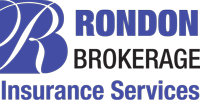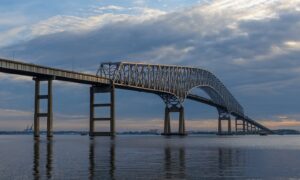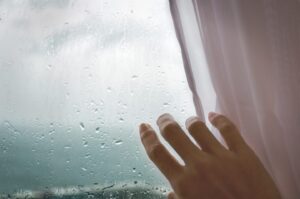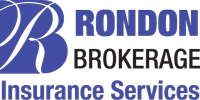Your home is most likely your biggest investment; you need to protect it, yet you have little or no information about homeowners insurance. If this is your situation, the following information will help you make an informed decision.
Two approaches to insuring your home: HO-2 vs. HO-3
Most insurance companies will give homeowners a choice in selection one of two approaches to insuring their property. The premium paid for each approach will reflect the extent of coverage provided.
The lower cost approach is called a named-peril policy. Perils are events such as a fire or windstorm, which cause a loss to property. If coverage applies only when a named peril occurs, then all perils that have not been named are excluded.
The higher cost approach is often referred to as an open-peril or all-risk policy. While these terms might seem to suggest unlimited coverage, this type of policy has boundaries just like the named-peril policy. The difference is that instead of naming perils, it is the exclusions that are identified. This leaves the realm of potential perils open to the imagination, but still in the confines of those events where no coverage is intended.
A corollary to these approaches can be seen in the legal enforcement of the policy contract. When perils are named, the burden of proof rests with the insured to prove that a covered peril damaged the property. Whereas, when perils are left open, the burden of proof lies with the insurance company to prove that an exclusion applies to the event causing damage to the property. A comparison between the two approaches will necessarily involve examining the named perils of one and the exclusions of the other.
Insurance companies sometimes write and file their own policies. Ten a company chooses not to file its own policies, it will use standard forms that are available from rating organizations.
The Insurance Services Office Inc. is an organization that writes standard policies for its member insurance companies. It also helps with the rating process by providing loss cost information from its large collection of historical data. Since it is one of the largest of such organizations, ISO policies will be used to compare the two approaches. However, you should consult the actual policy sold by your insurer for the scope of its coverage.
The ISO has made available four potential policy choices applicable to homeowners who own a one-unit to four-unit dwelling. They are:
- The Homeowners 8 – Modified Coverage Form (HO-8) is rarely sold, in fact, is not an approved ISO form in Connecticut, New Jersey, New Hampshire or Vermont, but is approved in New York.
- Homeowners 3 – Special Form (HO-3) This most sold policy insures structures on an open-peril basis and personal property on a named-peril basis.
- The Homeowners 2 – (HO-2) insures both structures and personal property on a named-peril basis.
- The Homeowners 5 (HO-5) Comprehensive Form insures both structures and personal property on an open-peril basis.
There also are specialized policies for condominium or cooperative owners (Homeowners 6 Unit-Owners Form) and renters (Homeowners 4 – Contents Broad Form).
Following is a comparison between the name perils of an ISO HO-2 (2022 edition) and the open-perils of an ISO HO-3 (2022 edition) policy.
What is Excluded?
Neither policy intends to provide coverage for certain events. Following are the General Exclusions:
- requirements of an ordinance or law 1) governing the construction, repair or demolition of a structure, or 2) respond to pollutants;
- earth movement;
- flooding or the backup of a sewer or sump;
- power failure off the premises;
- neglect or indifference to loss;
- war;
- nuclear hazard;
- intentional loss; and
- government action.
Limited coverage for ordinance or law is offered under a section of the policy titled Additional Coverage. Higher limits for ordinance of law, a well as coverage for the backup of sewers ad sumps, flood and earthquake, may be purchased by means of an optional endorsement or a separate policy.
HO-2 The named-peril policy
This policy covers the 16 perils listed below:
- fire or lighting;
- windstorm or hail;
- explosion;
- riot or civil commotion;
- aircraft or spacecraft;
- vehicles;
- smoke;
- vandalism or malicious mischief;
- theft;
- falling objects (e.g., trees);
- weight of ice, snow or sleet;
- pluming or appliance leakage;
- sudden and accidental boiler and air conditioner damage;
- freezing of plumbing or appliances;
- electrical surge or brownout damage; and
- volcanic eruption (above-ground damage only).
Collapse of building caused by certain conditions and glass breakage are covered as additional Coverage. Take note that some of these perils are subject to further clarification in the policy. You may have observed that this list included most of the perils that the typical home is exposed to unless vulnerable to flooding or earthquakes. But there could always be some event not included in this list that causes damage to property.
HO-3 Named-Peril Policy
Personal property of the homeowner is covered for the named-perils listed under the HO-2 policy. The dwelling and other structures at the residence are covered for direct physical loss to property except (in addition to the General Exclusions):
- collapse, if not otherwise covered under the Additional Coverages section;
- freezing of plumbing or appliances, where reasonable prevention measures were not taken (also excluded under the HO-2);
- freezing, thawing, pressure or wight of water or ice to certain structures or parts of structures (e.g., swimming pools);
- theft in or to a dwelling under construction (also excluded under the HO-2);
- vandalism and malicious mischief, when the dwelling has been vacant for 60 days or more (also excluded under HO-2);
- mold, fungus or wet rot (unless hidden and resulting from an accidental discharge of water or steam);
- wear and tear;
- inherent vice, latent defect or mechanical breakdown;
- smog, rust, carrion or rot;
- smoke from agricultural or industrial operations;
- release of pollutants, unless caused by an HO-2 peril;
- settling, shrinking, bulging, cracking or expansion of most structural components;
- birds, rodents or insects (e.g., termites or squirrels);
- waste products or secretions by any animals; and
- animals owned or kept by an insured.
Any ensuing peril originating from these listed exclusions that is not otherwise excluded would be covered. For example, a fire that results from mice chewing on wires or water leakage from rusted pipes would nevertheless be covered.
Is the coverage worth the added cost?
Homeowners often inquire about the kinds of events that would be covered under an HO-3 policy, but not an HO-2 policy. Here are some open-perils policy examples of actual claims paid under the HO-3 policy, bot not payable under the HO-2 policy:
- an unbalanced washing machine took a walk and damaged the hot ware heater;
- a window left open in a rainstorm allowed water to damage the interior walls and floor;
- water backed up on the roof, causing leaks, where no physical damage was done to the roof (often called an ice dam; very common in the Northeast);
- a fence was damaged by the new 16-year old driver of the family car;
- while a homeowner was moving a large dresser, it rolled down the stairs and through a wall;
- a homeowner’s young child did some decorating with a hammer;
- a homeowner missed the joists while attic walking and felt through the ceiling;
- a deer bled and roughed up the interior of the home after jumping through a window;
- a chandelier fell while it was being cleaned;
- a furnace working overtime due to a faulty thermostat warped cupboards and ruined drapes;
- a countertop was scorched from a hot appliance.
The information provided is a coverage summary. Please refer to the actual policy for terms, coverage, conditions and exclusions. When it comes to buying homeowners insurance, be sure to explore options to customize your limits and coverages to meet your needs and ensure your home and assets are adequately protected.





